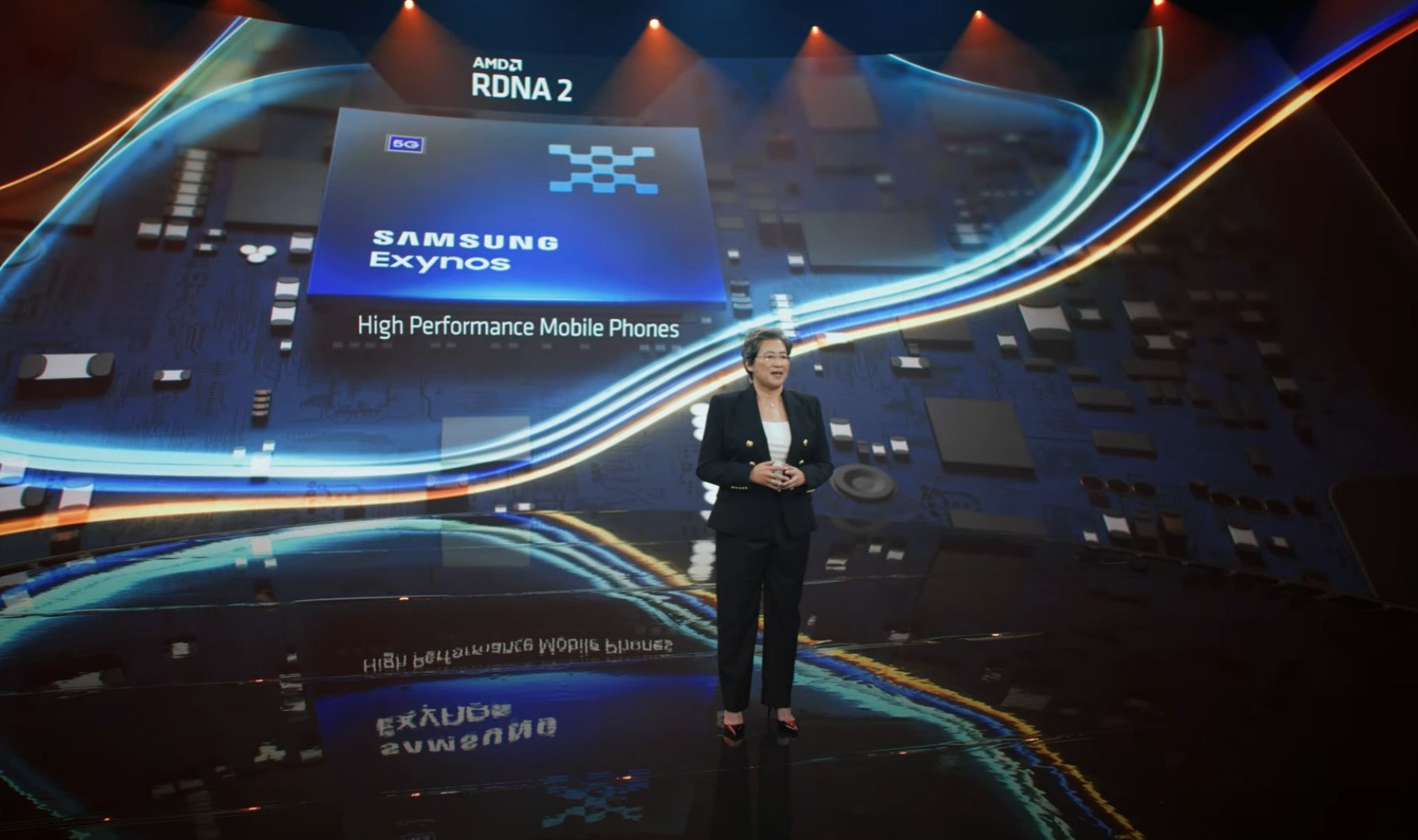AMD is bringing ray tracing to Samsung's phones later this year
Ray tracing and variable rate shading are coming to Samsung phones.
What you need to know
- AMD announced that it will bring its RDNA2 tech to the mobile segment for the first time.
- The tech will debut later in the year on Samsung's upcoming Exynos platform.
- AMD says it will deliver ray tracing and variable rate shading on phones.
At Computex 2021, AMD CEO Lisa Su announced key details for its RDNA2 architecture. The graphics architecture forms the basis for AMD's RX 6000 GPUs and powers the latest gaming consoles — both the PlayStation 5 and Xbox Series X feature RDNA2 chips — and AMD is now bringing the platform to new form factors.
AMD has announced that RDNA2 tech will be integrated into Tesla's Model X and Model S. Tesla's cars have an embedded Ryzen chipset already, and they will be getting a discrete RDNA2 GPU that unlocks AAA gaming — in your car. Su notes that the RDNA2 chip coming to Teslas will deliver up to 10TFLOPs of compute, which is on par with the 10.28TFLOPs on offer with the PS5.
But what's particularly interesting is where AMD's RDNA2 tech is heading next: "high performance mobile devices." AMD has announced that it will bring RDNA2 to Samsung's upcoming flagship Exynos platform, delivering ray tracing and variable rate shading to the best Android phones.
As a refresher, Samsung partnered with AMD back in 2019, with both manufacturers working together to integrate AMD's IP into a mobile form factor. We'll now see the fruits of that labor later this year; Samsung clearly stated that its upcoming Exynos flagship chipset will feature an AMD GPU, and it is exciting to see that it will be based on RDNA2.
So what makes RDNA2 so interesting? AMD overhauled its graphics architecture to deliver huge efficiency gains, a new on-chip Infinity Cache that enables high bandwidth use cases while minimizing power draw, and exciting new features like ray tracing and variable rate shading. Basically, RDNA2 is scalable, offers a massive increase in performance, and does all of this while being efficient.
It is this efficiency that will be key as AMD and Samsung integrate RDNA2 into mobile devices; phones are thermally constrained by design, so it will be interesting to see how the architecture holds up in this form factor. Samsung's Exynos designs haven't fared well against their Qualcomm counterparts in recent years, and while Samsung made decent strides with the Exynos 2100-powered Galaxy S21, the Snapdragon 888 still has the overall edge — particularly at gaming. But with RDNA2, that dynamic could change in favor of Samsung.
source https://www.androidcentral.com/amd-bringing-ray-tracing-samsungs-phones-later-year

Comments
Post a Comment